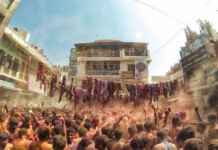Unlike the usual new year, the festivities of Chinese New Year vary significantly. Celebrated in countries such as Taiwan, Singapore,Thailand, Indonesia, Malaysia, Mauritius among numerous others. Chinese New Year is also known as the Spring Festival. The Chinese calculations are based on the lunar calendar, thereby making the festival the longest in the Chinese calendar. This is because the festivities were inagurated from the last day of the last month of the Chinese calendar, to the Lantern Festival on the 15th day of the first month, usually between Jan. 21 and Feb. 19 on the Gregorian calendar. Though the New Year celebrations continue for the entire period of fifteen days, In in China, the public holiday lasts for three days.
According to legends, Buddha asked all the animals to meet him on New Year’s Day and named a year after each of the twelve animals that came. Apparently, people born in each animal’s year have some of that animal’s personality traits. Each day of the fifteen-day Chinese New Year celebration has its own share of traditions.
Chinese families give their home a thorough cleaning before the New Year celebrations. Homes are often decorated with paper cutouts, with Chinese couplets and phrases written on them. Most of the decorations such as upside down fu, dui lian, lantern, year paint are red in color. Red packets are given by adults to the young children. It was believed that the money in the red packet will suppress the evil from the children. Fireworks are also an integral part of Chinese New Year celebrations.
The significance of the colour red in Chinese culture needs to be understood. Apparently, there was a mythical beast called the “Year”, who would come out to harm people and animals on the night of New Year’s Eve. Since ‘Year’ was afraid of the color red, fire, and loud sound. Thus, people launch fireworks and stay up the entire night to ward off this evil.
This is the time of the year when all the family members meet. Families gather together for meals, especially for a feast on New Year’s Eve. Also known as Shou Sui, a lavish spread is cooked on the reunion dinner. A communal hot pot s an important feature of the feast as it signifies the coming together of the family members for the meal. People normally stay awake during this night.
Chinese New Year ends with the lantern festival, celebrated at night with displays and parades of painted lanterns. The Dragon Dance is the highlight of the Lantern Festival. Dragons made of paper, silk and bamboo make their way along the parade routes. It is believed that the face of a dragon, accompanied with loud beats of the drum and cymbals wards away evil spirits.
Since the festivities continue for a long period, plan a trip to any of the countries which celebrate Chinese New Year to get a glimpse of a different, yet unique culture.










